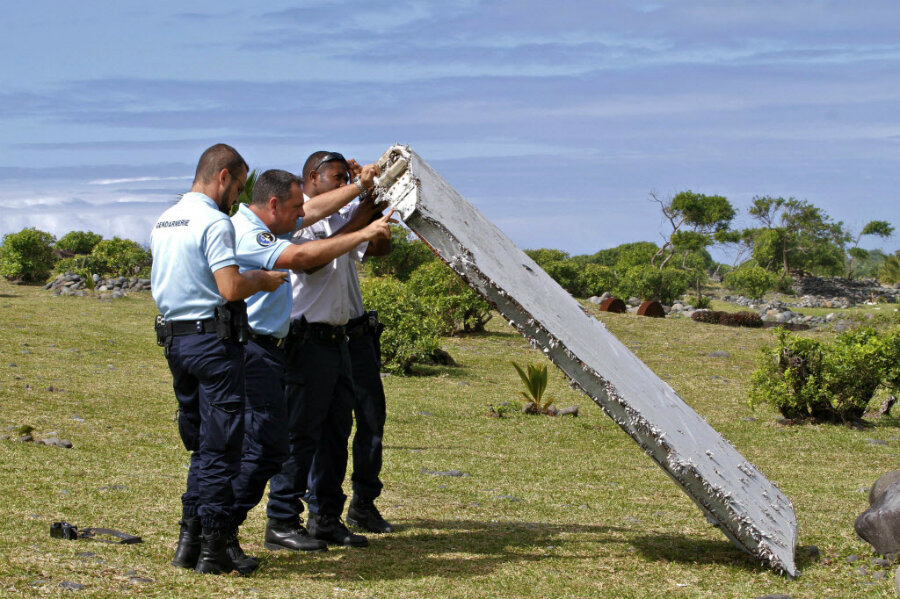Did you misplace three 747s? If so, then Malaysia would like a word with you
Loading...
Less than two years after a Malaysian jetliner disappeared over the Indian Ocean, the country is now searching for the owners of three Boeing 747s left abandoned at an airport near Kuala Lumpur.
The publicly-listed airport operator, Malaysia Airports Holdings, placed an advertisement this week in two local newspapers asking for the jet owners to come forward. According to Bloomberg News, the planes are parked at three different bays at the Kuala Lumpur International Airport in Sepang.
The announcement comes amid a corruption scandal against Malaysian Prime Minister Najib Razak, who is accused of stealing $700 million from a public development fund, and a vote by Malaysia’s parliament last week to expand the prime minister’s powers that some have said veers the country toward dictatorship.
The advertisements describing the owners of the missing jets in Malaysia were placed Monday in The Star and in the Sin Chew Daily, indicating that the aircrafts could be sold to “recover the charges owed by the owner to Malaysia Airports,” according to a company statement. The company said the planes have sat on KLIA tarmacs since 2014.
“We have been in communication with the so-called owner, but they have not been responding to take away the aircraft,” Zainol Mohd Isa, a company spokesperson, told Bloomberg. “We want to clear the area, we want to utilize our parking bay.”
Oddly, one of the abandoned jets was used by the cargo division of Malaysia Airlines, which leased the Boeing 747 from Air Atlantic Icelandic, according to Bloomberg.
In a statement released on Tuesday, the Malaysian airport authority suggested the incident and the way it was advertised was “a common and reasonable step” to collect debt and contact the owners.
“This step is also a common process undertaken by airport operators all over the world when faced with such a situation,” it read.
Despite its apparent inability to track the owners of airplanes on its runways, the country has taken steps to improve how it trails airplanes in flight.
In 2014, a Malaysia Airlines plane disappeared over the Indian Ocean, with 239 people on board. Later that year, another Malaysia Airlines plane was shot down over eastern Ukraine, killing another 298. The carrier also has reached the brink of bankruptcy during the last several years, remaining solvent only with government financial support.
Malaysia has since joined Indonesia and Australia in a trial of air traffic control system to keep better tabs on airplanes navigating across remote oceans between their countries. The provisional measure requires pilots to check in with air traffic controllers every 15 minutes, rather than every 30 minutes.
David Ison, assistant professor at Embry-Riddle Aeronautical University told National Public Radio last year that other technologies already exist that could further improve tracking aircraft.
One such tool would require airplanes to transmit positions to other planes in the air, receivers on land and even oil rigs, replacing radar in remote regions.
He also noted that aircraft could communicate locations, using satellite or radio signals. "Neither of these, unfortunately, are widely used at this point," he said.
Earlier this month, a United Nations conference unveiled a plan to use part of the radio spectrum as a global flight tracking system. The UN’s World Radiocommunication Conference agreed to allow satellites to receive specialized transmissions that aircraft currently send to other planes and to ground stations.
The transmissions, known as automatic dependent surveillance-broadcast (ADS-B) will be transmitted to satellites, allowing real-time tracking of flights anywhere in the world, François Rancy, head of the U.N. International Telecommunication Union’s Radiocommunication Bureau said in a statement.
The UN’s approach marks a breakthrough because while most planes have some form of flight tracking, the features offered by such services can vary widely, with more tracking capabilities often coming at increased cost, USA Today reports.







